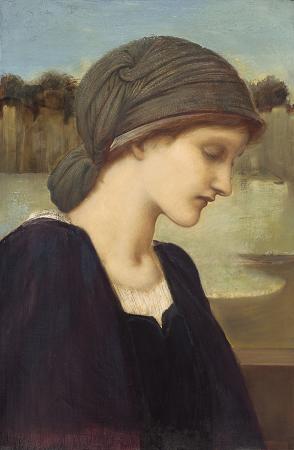Charles Ricketts (1866 - 1931). Charles de Sousy Ricketts was a British artist, illustrator, author and printer, known for his work as book designer and typographer and for his costume and scenery designs for plays and operas. Ricketts was born in Geneva to an English father and a French mother and brought up mainly in France. In 1882 he began studying wood engraving in London, where he met a fellow student, Charles Shannon, who became his lifelong companion and artistic collaborator. Ricketts first made his mark in book production, first as an illustrator, and then as the founder and driving force of the Vale Press, one of the leading private presses of the day, for which he designed the type and illustrations. A disastrous fire at the printers led to the closure of the press, and Ricketts turned increasingly to painting and sculpture over the following two decades. In 1906 he also began a career as a theatre designer, first for works by his friend Oscar Wilde and later for plays by writers including Aeschylus, Hugo von Hofmannsthal, William Shakespeare, Bernard Shaw, and W. B. Yeats. His most enduring theatre designs, which remained in use for more than 50 years, were for Gilbert and Sullivan's The Mikado. With Shannon, Ricketts built up a substantial collection of paintings, drawings and sculpture. He established a reputation as an art connoisseur, and in 1915 turned down the offer of the directorship of the National Gallery. He later regretted that decision, but served as adviser to the National Gallery of Canada from 1924 until his death. He wrote three books of art criticism, two volumes of short stories and a memoir of Wilde. Selections from his letters and diaries were posthumously published. Ricketts was born in Geneva, the only son of Charles Robert Ricketts, a retired English naval officer, and Helene Cornelie de Soucy, daughter of Louis, Marquis de Soucy. The couple also had a daughter, Blanche. It was an artistic household: Ricketts senior was an amateur painter, and his wife was musical. Ricketts spent his early childhood in Lausanne and London, and his early teens in Boulogne and Amiens. Except for a year at a boarding-school near Tours he was educated by governesses. Helene Ricketts died in 1880 and her widower moved to London with his two children. Ricketts was at that stage hardly able to speak English. His biographer Paul Delaney writes that the boy was considered too delicate to attend school, and consequently was largely self-educated, reading voraciously and basking in museums; he thus escaped being moulded along conventional lines. In 1882 Ricketts entered the City and Guilds Technical Art School in Kennington, London, where he was apprenticed to Charles Roberts, a prominent wood-engraver. The following year Ricketts's father died, and Ricketts became dependent on his paternal grandfather, who supported him with a modest allowance. On his sixteenth birthday he met the painter and lithographer Charles Haslewood Shannon, with whom he formed a lifelong personal and professional partnership. The Times described their relationship: a lifelong friendship of so close a nature that from that time onwards the two shared the same studio and lived together in a state of celibate commensalism as remarkable as any of the great historic friendships, or the finest Darby and Joan examples of wedded felicity. It was seldom I think or I do in the Ricketts and Shannon manage, but almost invariably We think and We do. After concluding their studies at Kennington, the two men considered going to live and work in Paris, as several of their contemporaries had done. They consulted Pierre Puvis de Chavannes, an artist they revered, who advised them against it, considering the current trends of French art to be excessively naturalistic-photographic drawing. Shannon, three years the senior, took a teaching post at the Croydon School of Art, and Ricketts earned money from commercial and magazine illustrations. In 1888 Ricketts took over James Abbott Whistler's former house, No 1, The Vale, in Chelsea, which became the focus of contemporary artists. They produced The Dial, a magazine devoted to art, that had five issues from 1889 to 1897. Among their circle was Oscar Wilde, for whom Ricketts illustrated his books A House of Pomegranates and The Sphinx, and painted, in the style of Francois Clouet, the hero of Wilde's short story, The Portrait of Mr. W. H. used as the frontispiece of the book. Ricketts and Shannon worked together on editions of Daphnis and Chloe and Hero and Leander.
more...













